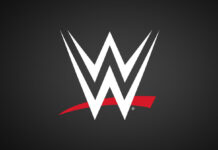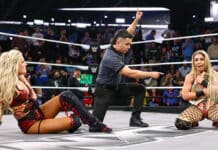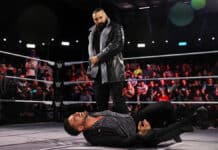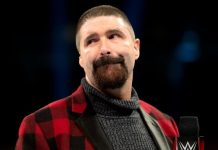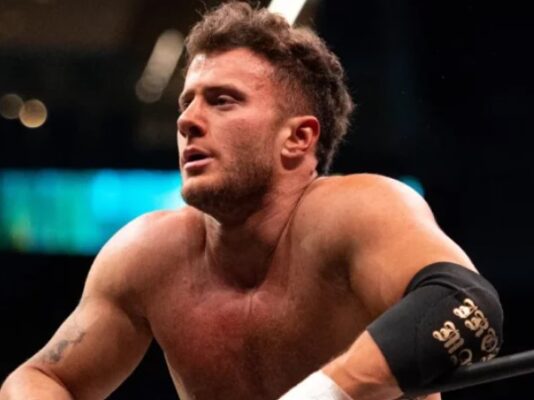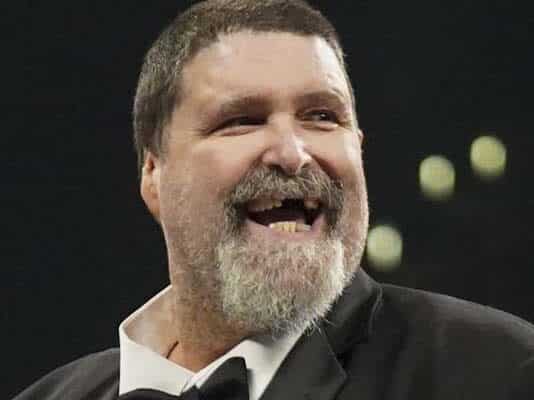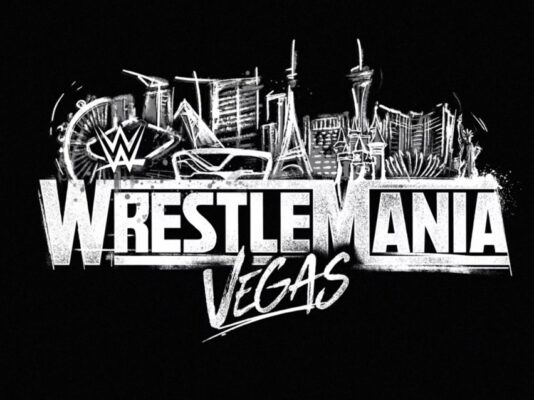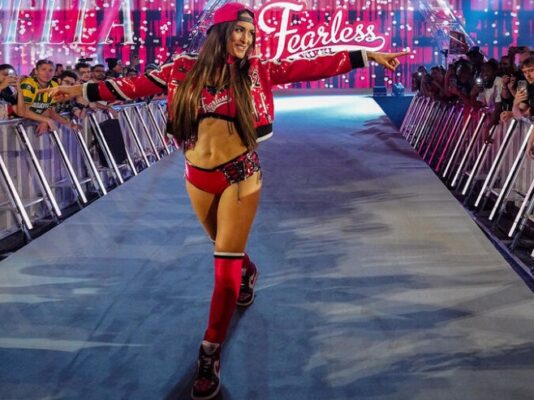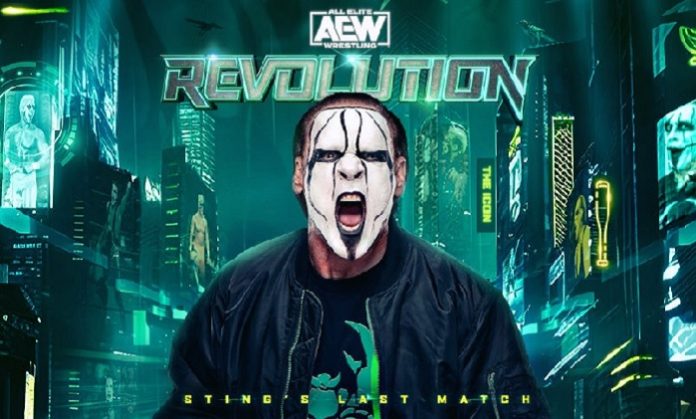
On the week when crusty and miserable legend, Ole Anderson passed away at the age of 81, Sting’s retirement match will headline the All Elite Wrestling Revolution pay-per-view, appropriately held in Greensboro, North Carolina, the old stomping grounds of Jim Crockett Promotions where Sting got his first big break in the sport. The city remained a WCW stronghold based on is prior association with Crockett until the purchase of the company in 2001. So, it’s a fitting location for the real-life Steve Borden’s final bout, as he was the true franchise player of World Championship Wrestling.
Make no mistake about it, Sting was a stellar bright spot in the otherwise bleak first few years of Turner ownership of WCW. To call the Jim Herd era lean years would be an understatement, but Sting was the top guy that the company counted on, especially when Ric Flair left for a two-year stint in the WWF after a dispute with Herd.
The real-life Borden was also a smart businessman, he knew his value, and more often than not, was able to get it. As one of the top guys in WCW in the early-90s, the term “Sting money” was later used in negotiations for big names from the WWF as a reference for the potential to be among the highest paid performers on the roster. Granted, Sting wasn’t Lou Thez in the ring, and he didn’t need to be, he worked to his strengths, a fast-paced and flashy performance with a level of charisma that could connect with the audience. Despite the fact that his historic title victory at Starrcade 1997 was completely botched by management, there’s no doubt that the Crow version of Sting was one of the most popular characters at the peak of WCW’s popularity. The argument could be made that the Crow version of his persona was more popular than the original surfer character. Not only did Sting know how to maximize the presentation, but at a time when the NWO were the cool heels on the show, Sting was still an over baby face with the audience.
He also knew when to step away and when to consider a return to the ring, as it maximized his value.
After he made hefty cash in WCW, he had the financial security that he didn’t need to jump at the first offer made to him by Vince McMahon. Instead in the five years after the Turner buyout, he only worked a handful of matches for major money each time he laced up the boots. A four-match run with TNA in 2003 and less than a dozen matches for the ill-fated World Wrestling All-Stars tours kept a level of mystic around him, particularly because even the brief TNA appearances were during the weekly PPV era so most fans hadn’t seen him since the final Nitro went off the air.
Sting knew how to draw money and he knew how to make money, as did the previously mentioned Ole Anderson. Ole didn’t evolve and ultimately, that saw the business pass him up so he didn’t have a role in later years, but as bitter as he was, he undoubtedly understood the true fundamentals of success in the industry.
Just a few months after TNA debuted on Spike and had a level of cash from the network to bring in more star power, Borden inked a very lucrative contract with the organization and worked there for several years. Credit to Sting, most former WCW or WWE talent treated TNA like a paid vacation and mailed-in many of their performances, but he worked at a level to keep pace with the new generation. Don’t get me wrong, Sting knew that the face paint and the scorpion presentation is what fans wanted to see, but at the same time, when he beat Jeff Jarrett for the title at Bound For Glory in 2006, even at 50, he was in great shape and added a few new aspects to the presentation with some red face paint and different entrance attire.
Sting finally landed in WWE in 2014 after it was the last big money company left to work at the time, and because there was nearly 15 years of anticipation behind it, he made major cash, despite only working two matches. Of course, he had to lose to Triple H at Wrestlemania since Vince McMahon was still fighting the wrestling war that he won a decade and a half earlier. Regardless of how well received Triple H is now and definitely has a positive impact to the current product, make no mistake about it, it’s no coincidence that Vince’s son-in-law got to beat the franchise of WCW at WM. A power bomb to the corner in a match against Seth Rollins in late-2015 caused a neck injury that presumably ended Sting’s in-ring career. It was a rather flat conclusion to a very accomplished career, but as mentioned, the WWE contract was very profitable for Sting, specifically because there was an entire line of merchandise for him throughout his WWE deal.
Let’s not forget, Steve Borden is a smart businessman.
When a billionaire started a wrestling company and was known to be a major WCW fan, Sting was able to capitalize on that and signed another hefty deal at almost 60. While there are probably some savvy veterans on the AEW roster that are just there to collect a paycheck from Tony Khan, Borden isn’t one of them. Similar to his TNA run, Sting went above and beyond what he had to do to earn the cash, especially at his age. More than before, Sting could’ve played the greatest hits with a Stinger splash and the Scorpion Death Lock to work relatively easy matches for a limited schedule. I’m not necessarily sure how wise it is, but over the past four years, Sting has dove off of the balcony on more than one occasion in his mid-60s.
For a portion of his career, Steve Borden, for whatever reason, had somewhat of a label as a guy that was only in wrestling for the money. Maybe it was because he started with a bodybuilding background instead of a wrestling foundation, maybe it was because he had early success in his career and was sometimes a big fish in a small pond, or maybe it was because he was selective of when he inked a new deal. Again, he was away from the industry almost completely for five years after the WCW shutdown. For whatever reason, there might’ve been the narrative earlier in his career that pro wrestling was only a way to make major money, rather than a dedication to the sport itself. Hopefully, at this point, that notion has been disproved, because Sting without question has a passion for the pro wrestling industry. He was just a very smart businessman and maximized his opportunities and his earning potential. When there’s no pension or retirement plan for pro wrestlers, you can’t blame him for that.
Sure, he didn’t jump at the chance to work a Wrestlemania just because of the name of the event, but as mentioned, Sting always worked hard, even when he probably didn’t have to or could’ve coasted on his legacy. In the past four years in All Elite Wrestling, even when there were times when he showed his age, Sting gave a quality performance so the dedication to the sport is there. Sting has to have a passion for the business if he was willing to dive off the balcony at retirement age.
That’s why it’s great that his final bout is the centerpiece of the Revolution pay-per-view, he deserves the stage and the acknowledgement, and it’s a much better conclusion to his career than the neck injury he suffered in 2015. Some have criticized The Young Bucks as the team for his last match, but reportedly, he requested to work with him, and if that’s the case then he deserves to be able to pick his opponents. While there probably were times when AEW yielded to The Bucks’ ego, specifically when they refused to work with CM Punk, egos aren’t anything new in the wrestling business, and it’s doubtful that’s why they were booked to work Sting’s last match anyway. The Young Bucks are going to make Sting look like a million dollars in his last match so anything else is moot.
The success of the Revolution pay-per-view will be based on Sting’s retirement match, and he deserves that spotlight. Still, outside of the Eddie Kingston/Bryan Danielson match, and the Will Ospreay/Konosuke Takeshita bout, Sting’s last match is the only solid selling point of the show. The world title match that might be a triple threat match was too convoluted to be built properly and only has a moderate buzz at best. Given Swerve’s popularity, it would’ve made more sense to focus on Samoa Joe/Strickland than to dilute the storyline with the addition of Adam Page, who still hasn’t recovered from being cast as a whiny baby face during his world title run a few years ago. The under card is total cannon fodder and lacks the substance to have a level of importance in the grand scheme of things for the company.
What do you think? Share your thoughts, opinions, feedback, and anything else that was raised on Twitter @PWMania and Facebook.com/PWMania.
Until next week
-Jim LaMotta
E mail [email protected] | You can follow me on Instagram, Facebook, & Threads @jimlamotta89

